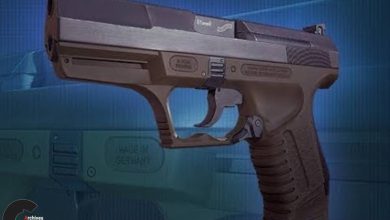TREAD: Hard Surface Asset Creation for Video Games
Hard Surface Asset Creation for Video Games
Hard Surface Asset Creation for Video Games : We’ll explore how we can harness modifiers and non-destructive modeling techniques in Blender to design complex models with relative ease. We will discover some tools to help us create efficient UV unwraps which will also play a critical role in clean, high quality textures. Using Substance Painter, we will generate those textures which will bring life into our model. Finally, we will look at importing our game-ready asset into Unreal Engine and set up a material using our texture maps.
The techniques explored in TREAD will provide a universal basis for tackling any future hard surface modeling, and build a foundation for understanding the game asset pipeline in its entirety.
Chapter 1
Modeling
We’ll start by creating the “high-poly” version of our model, taking the time to model out the important details that will increase the realism and believability of our asset. Once we’ve crafted our high-quality model, we will spend some time developing a lower-polygonal version which will serve as the game-ready asset.
Chapter 2
Unwrapping
Before we can start texturing our model, we need to provide our model with a UV Map. This process will involve strategically adding “UV Seams” to our model so that the software knows how to properly “unwrap” it for texturing.
Chapter 3
Texturing
Texturing is the best way to bring life into a 3D model, and convey the type of environment your model could inhabit. This chapter will explore texture baking and creation using Substance Painter, a 3D texture painting application used professionally in productions for film and video games.
Chapter 4
Rendering
Back in Blender, we will discover how we can generate high quality renders for our game asset using simple but effective lighting setups and backdrops. Blender makes it easy for us to capture top-notch renders for our assets which could be used for portfolio renders, or other image-based assets for a game.
Chapter 5
Importing into Unreal Engine
Finally, we’ll cover how we can import our game-ready asset into Unreal Engine, and set up a material to display the textures we had created.
Direct download links 2.6 GB :
Direct download link reserved for subscribers only This VIP
Dear user to download files, please subscribe to the VIP member
- To activate your special membership site, just go to this link and register and activate your own membership . >>>register and activate<<<
- You can subscribe to this link and take advantage of the many benefits of membership.
- Direct downloads links
- No ads No waiting
- Download without any limitation ، all content in website
CGArchives Is The Best
Review
Review
Rate this post





